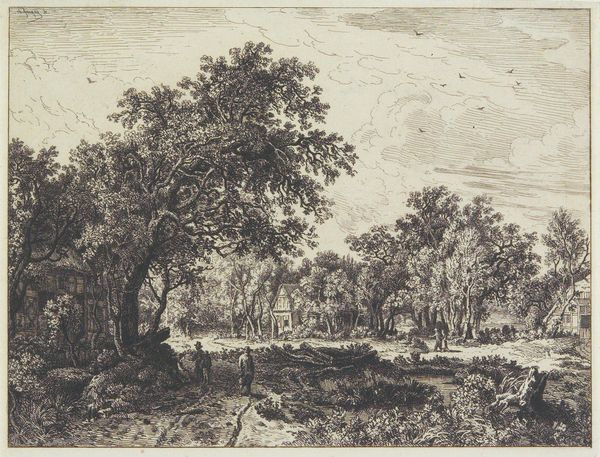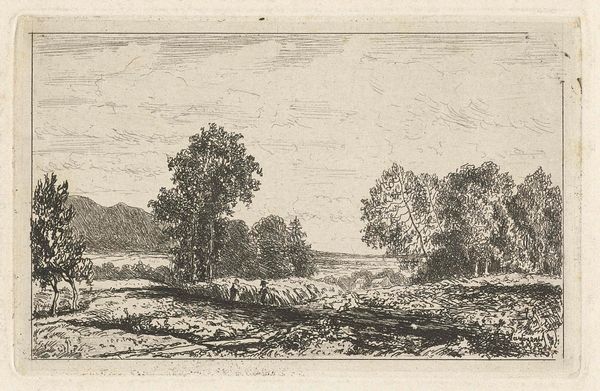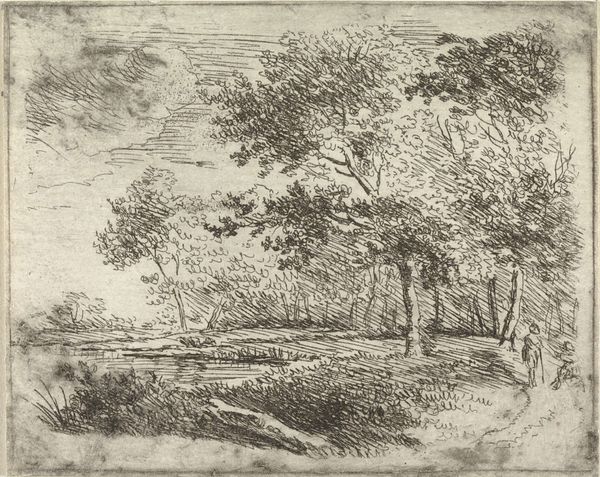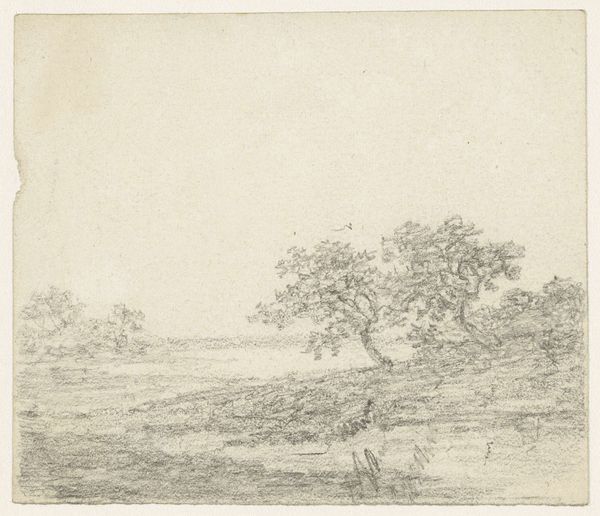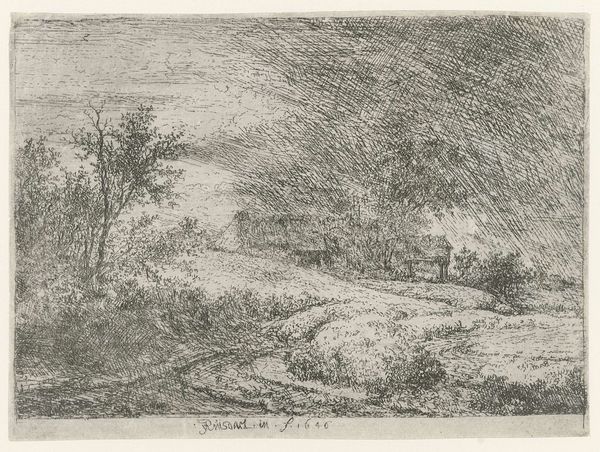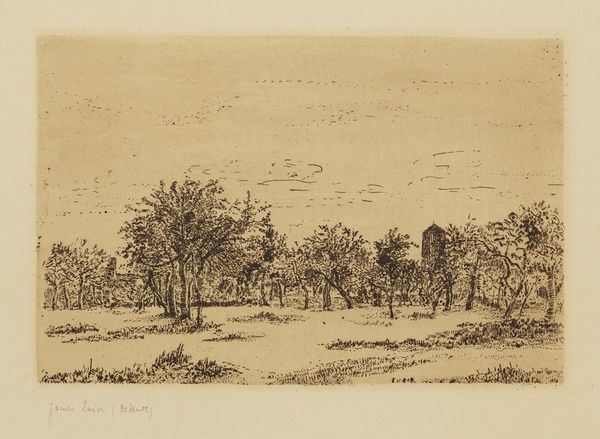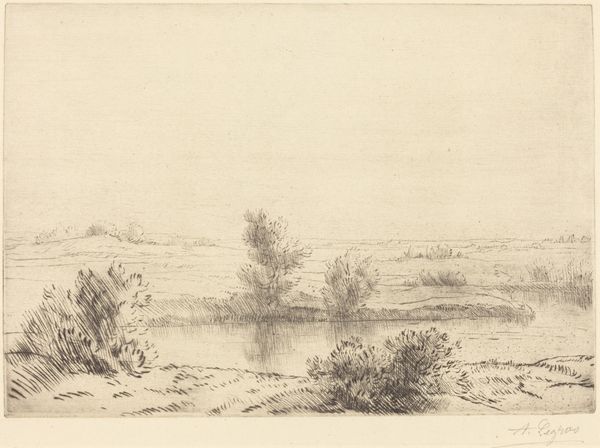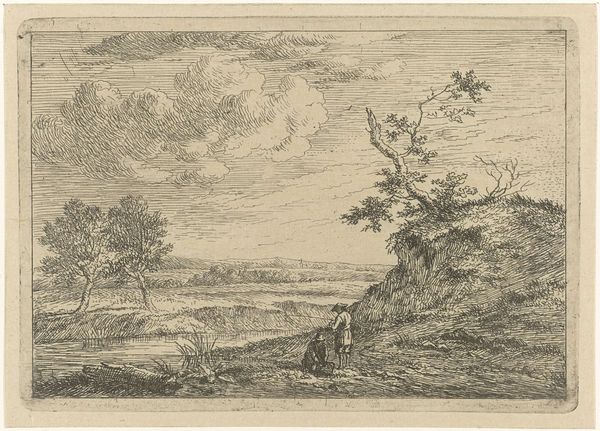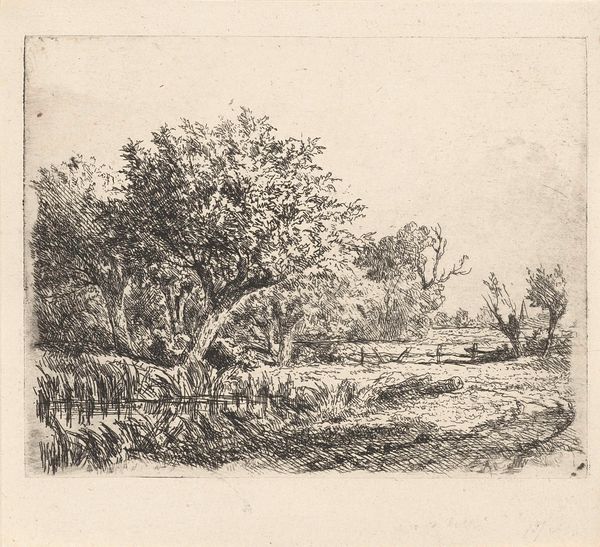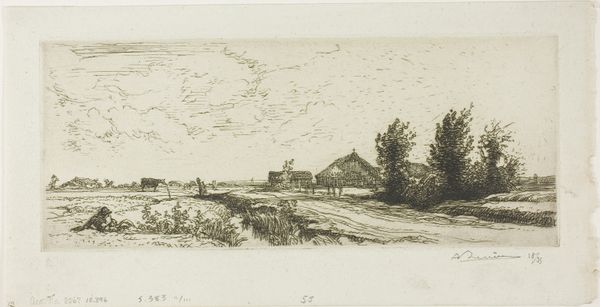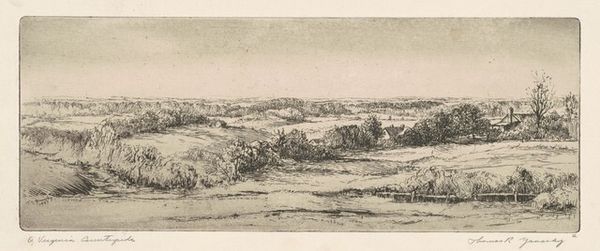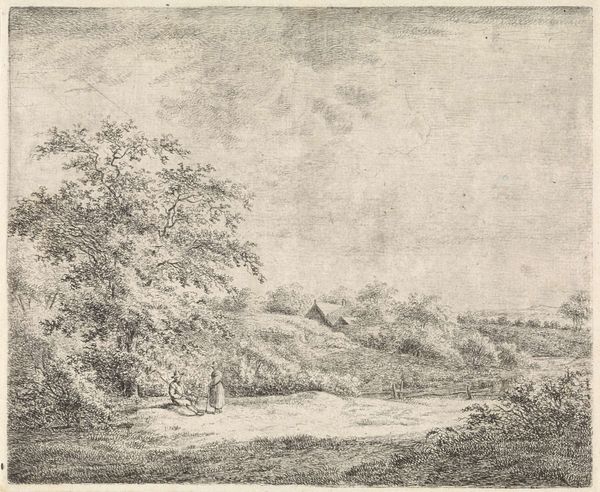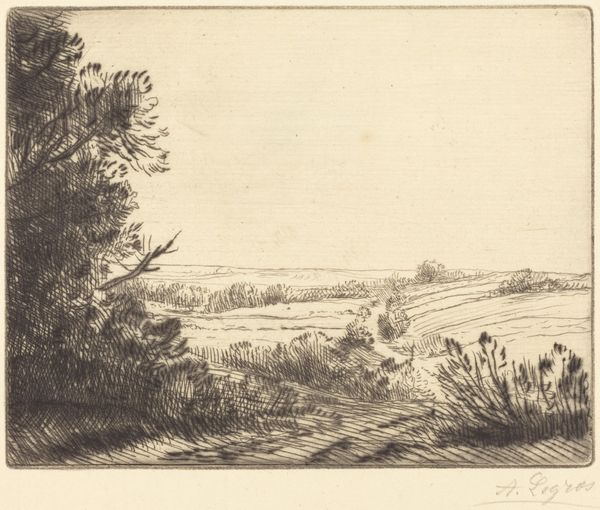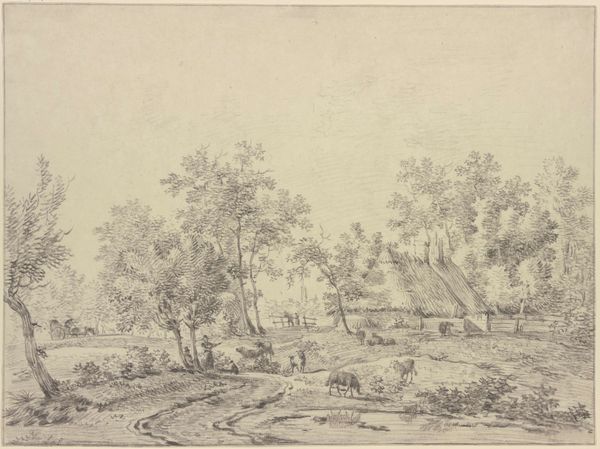
Dimensions: 244 × 302 mm (image); 244 × 302 mm (sheet)
Copyright: Public Domain
This landscape was created by Theodore Rousseau using etching, a printmaking technique known for its fine detail. Lines are bitten into a metal plate with acid, which then holds ink to be transferred to paper. The result is a rich surface, teeming with marks that suggest the vibrancy of the French countryside. Notice how the etching captures the nuances of light and texture across the plain, from the wispy clouds to the dense foliage. The physical act of etching involves both careful control and chance, as the acid interacts with the metal, and the application of ink. This combination of skill and accident lends a unique quality to each print. It merges the artist’s vision and the unpredictable nature of the medium. Rousseau wasn't just depicting a scene, he was also deeply engaged with the language of mark-making, elevating printmaking to the level of fine art. By understanding the materials and processes involved, we can fully appreciate the layers of meaning embedded in this seemingly simple landscape.
Comments
No comments
Be the first to comment and join the conversation on the ultimate creative platform.
